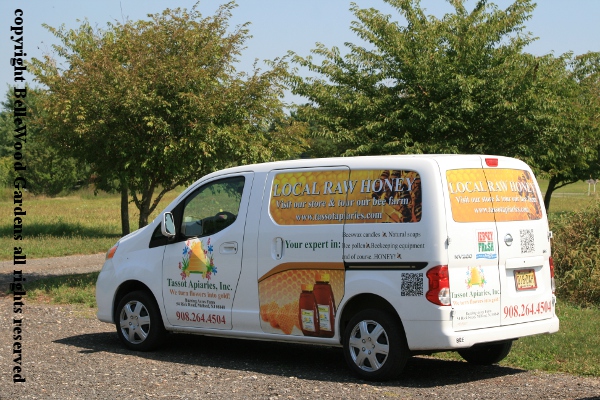
.
If you have any comments, observations, or questions about what you read here, remember you can always Contact Me
All content included on this site such as text, graphics and images is protected by U.S and international copyright law.
The compilation of all content on this site is the exclusive property of the site copyright holder.
We're off on an outing, "we" being the Tohickon Garden Club and today's outing a visit to

Tassot Apiary where we'll learn about bees and bee-keeping.
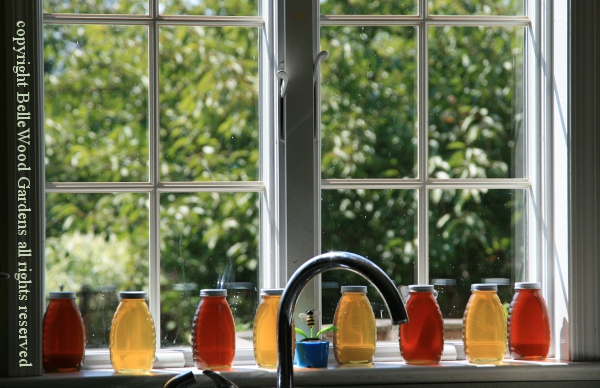
Sweet honey is produced by bees, honey bees. So welcome was this liquid gold and the beeswax for candles, that European settles brought bees along with them when they came to the Americas. Honey bees, you see, are not native here. Neither, for that matter, are the white, pink, and red flowered clover that are a standard for much of the commercial honey sold in stores. Oh, there are bees native to North America but they are the solitary kind, like bumblebees.
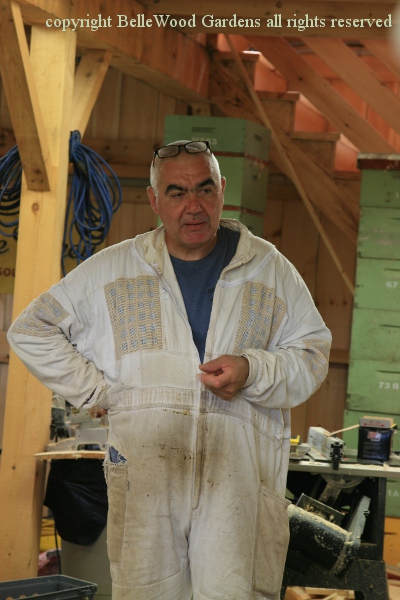
Once we all arrived and gathered in the lovely building (opened just this Spring that houses the shop and work area) Jean-Claude gave us a nice lecture with a substantial overview of bee keeping. Questions were welcomes, and he gave careful consideration to the answers.

At the lecture's conclusion we took a stroll to the row of beehives. These are just a few of the couple of hundred hives that the apiary has set up on farms around New Jersey. The different styles of hives displayed here are useful demonstration material for lectures such as these, and do also produce honey (about 65 pounds per hive.)
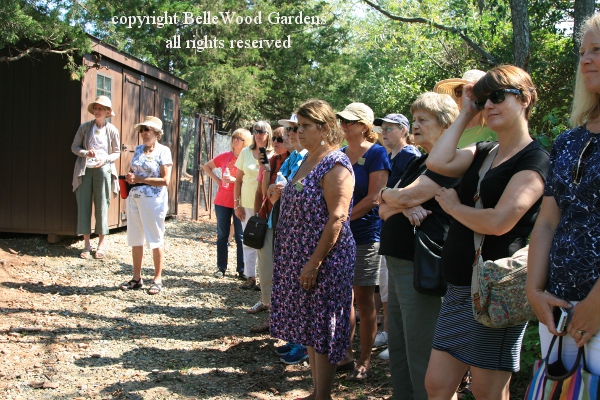
Jean-Claude may be comfortable around the hives.
We preferred to watch and listen from a bit more distance.

A smoker device helps keep the bees calm when someone is working with their hive. For preference, Jean-Claude uses pine needles, the longer ones, though there are other substances if they are not available. The commercial pellets, he discovered, fall out of the spout when he tilted the smoker - not a good thing.
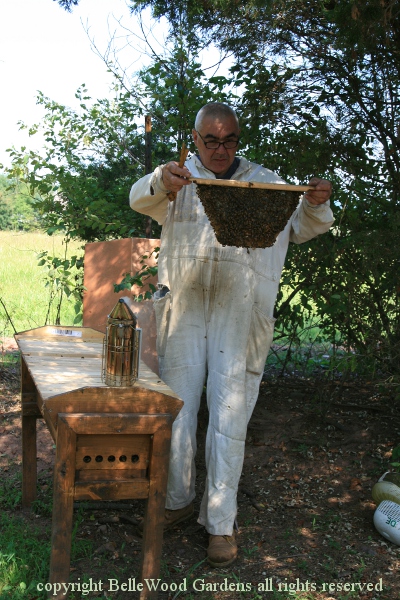
Jean-Claude with one frame from a top bar hive. It's covered with bees.

Here he is with a frame from a Langstroth hive. What is he looking for?
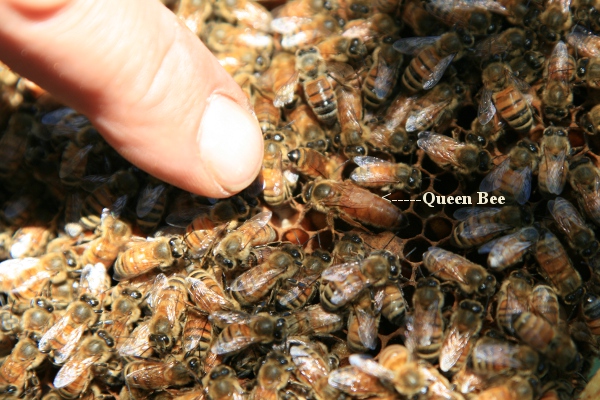
He wanted us to see the queen bee, capable of laying 2,000 eggs / day at peak.
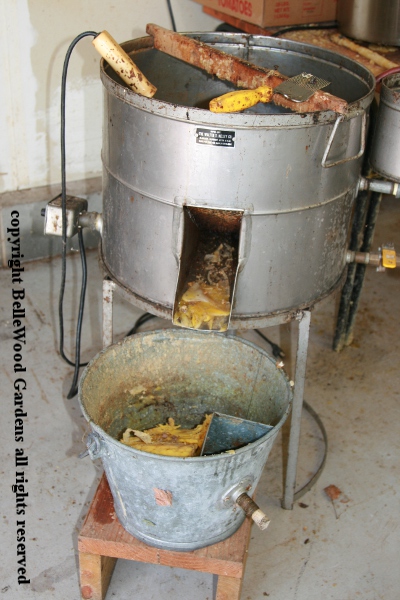
Bees are efficient pollinators. Without them farms and orchards would not be so productive. The service they provide in this regard is sort of out of sight, out of mind for most of us. It's the honey and the beeswax that we think of in connection with honey bees. The frames are brought to the honey and beeswax workshop. The cells are opened, and the frames spun in the extractor to remove the honey. The wax is melted and collected. But it is dirty with bits of dirt, dead bees, and crud. So it must be melted, together with water, in a double boiler device. The wax rises to the top, is allowed to cool and solidify. The crud is now on the bottom. It is scraped off as best as it can. The process is repeated again, and again, and as many times as needed to achieve a cake of clean beeswax for candle making and other uses.
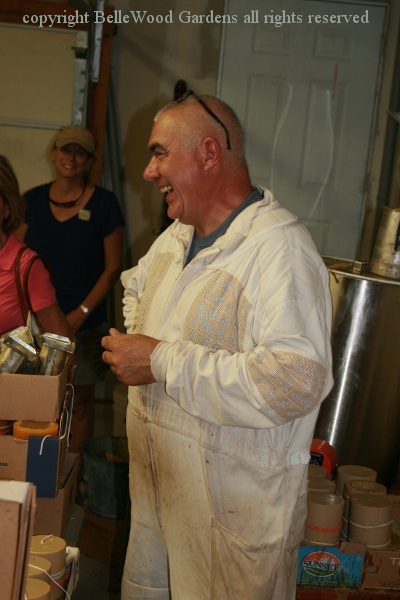
"It's work!" laughs Jean-Claude.
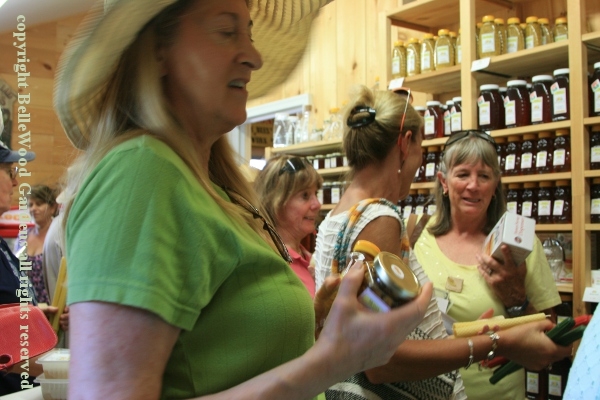
Our tour concludes in the shop, were everyone is attracted to the honey, a diversity of candles, fragrant soaps (with beeswax) and more, all made here at the apiary.

A diversity of honey and honied delicacies, to go with our memories of today's outing.
Back to Top
Back to August 2014